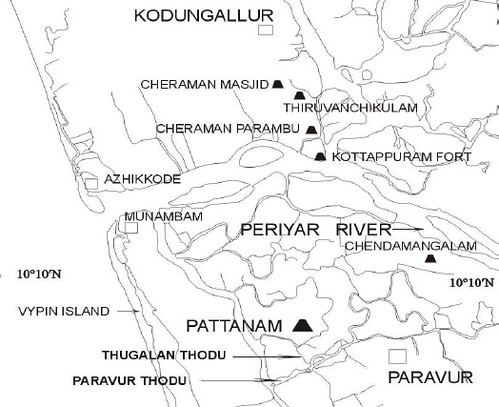
The BBC has an article on the theory that the town of Pattanam in Kerala could be the location of the ancient port of Muziris.
What is known, from a 1st Century document, is that the harbour was “exceptionally important for trade.”
Clues to its location are provided in ancient Indian texts. Professor Rajan Gerta, from Mahatma Gandhi University in Kerala, said that there are many references to “ships coming with gold, and going back with ‘black gold'” – pepper.
“These ships went back with a whole lot of pepper and various aromatic spices, collected from the forests,” he added. Merchants from a number of different cultures are believed to have operated in the port, and there are numerous Indian finds from the time as well as Roman ones.
In 1983, a large hoard of Roman coins was found at a site around six miles from Pattanam. However, even if Muziris has been found, one mystery remains – how it disappeared so completely in the first place.
Dr Tomba said that it has always been presumed that the flow of the trade between Rome and India lasted between the 1st Century BC through to the end of the 1st Century AD, but that there is growing evidence that this trade continued much longer, into the 6th and early 7th Century – although not necessarily continually. [Search for India’s ancient city via email from Srijith]
There is no new information in this article. Dr. Shajan has been in the news for suggesting the location of Muziris and has been covered in varnam here and here. Dr. Shajan and V. Selvakumar have a 47 page presentation on the new evidence on which they have formed this conclusion.
Note that the map shows the location of the Cheraman Perumal Masjid, which according to myth, was built by a Kerala king who converted to Islam.
(Image via Dr. Shajan)
As far as I understand, spice trade to Europe from the 7th to the 15th century was via Venice. Venice was the only gateway for this trade to Europe, which they utilised completely to their advantage. So, you may see this as an indirect trading route to Rome (if you consider Roman and Venetian republics as two separate nations back then). The trade route was India->Syria->Egypt(Alexandria)->Venice.
Eventhough the spice was from India, it was the Arab merchants who transported them all the way to Egypt and dealt with the Europeans.
P@L,
The Arab middle men used to charge heavily for their services and hence people like Vaso da Gama started looking for a sea route to India. This spice business via sea then led to the rise of marital powers like Portugal, England, Spain and the Dutch and eventually to the colonisation of the sub continent.